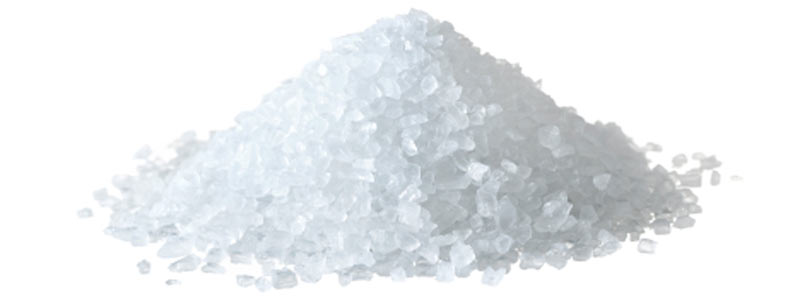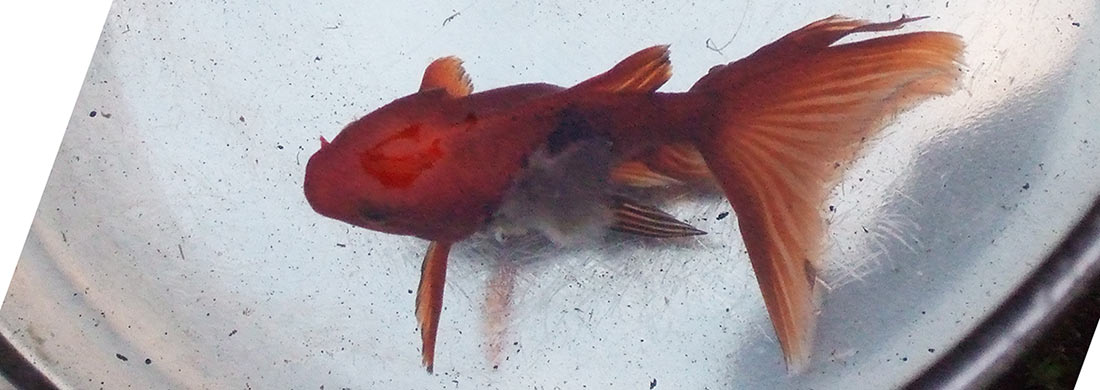Often called ‘Chicken Soup for Fish’, pond salt is something every fish or koi owner should have on hand at all times. If your fish are flashing, acting lethargic, or they are just not acting normally, this could be a sign of a parasites. This is a perfect time to add salt to your pond. Not only does pond salt help to boost your koi’s natural defence to disease, it reduces the effect of nitrite toxicity, and it also adds beneficial electrolytes to the water. But most importantly, when used at the correct dose, it will kill most of the common parasites found in ponds.

Non-iodized salt, Sodium Chloride (NaCl) is the best type of salt to use in ponds with koi and goldfish. It should be pure salt with no additives, which could adversely affect your fish. Many water softener salts contains YPS (Yellow Prussiate of Soda) which acts as a anti-caking agent. YPS is hazardous to fish. It is inexpensive, safe to use, it will not harm your biological filter, it is useful in treating parasites and helps fight the effects of nitrite toxicity.
It is recommend that you use salt, before you try anything else for parasites because it has so many benefits over other medications.
Most fish have an internal salt concentration of 1.0% or 10 parts-per-thousand (ppt) which is higher than their water environment. Because the process of osmosis causes water to move from the lower salinity of the pond water into the tissues of the fish, they have to constantly work to get rid of the excess water from their bodies. The addition of salt will lower the osmosis pressure, and reduces the effort the fish have to make to eliminate the excess water. The saved energy is then available for use by the fish’s own immune system to fight diseases.
Salt is a very safe treatment for most fish. Koi, goldfish and any other fish you may have in your pond are all tolerant of the salt concentrations you need to treat parasites.
Pond salt is a gentle treatment, particularly on weak and sick fish. Many medications, especially parasite medications , although effective, can be very harsh. Often, fish that are in a weakened state as a result of a parasite or bacteria infection cannot handle the effects of these treatments.
Salt concentrations between 0.3% and 0.5% (3 to 5ppt) will upset the osmotic balance of many parasites. At these concentrations, the parasites’ cells will dehydrate and they will die.
Salt Kills the Following Parasites:
Salt can also be very helpful when treating fungus and bacterial infections

High nitrite levels are the sign of poor water quality in the pond. High nitrite levels often follow elevated ammonia levels, which can stress koi and goldfish and weaken them enough to make them susceptible to parasite or bacterial infections.
Nitrites get into the bloodstream of fish and bind to hemoglobin, preventing the oxygen molecules from binding. The effect on the fish is they don’t get enough oxygen in their bloodstream. The symptoms of nitrite toxicity range from lethargic fish, laying on the bottom of the the pond to fish suffocating to death in ponds with high nitrite levels.
Salt helps fight nitrite toxicity by limiting the uptake of nitrites by the fish, limiting the damage and effect.
A fish’s first line of defence against parasites and bacteria is their mucous coat, also known as the slime coat. A salt concentration of 0.3% stimulates extra production of mucous in the skin cells of fish and provides an extra thick layer of mucous protection.
Most medications are only effective for hours or days at the most, then they need to be reapplied to the pond. Sunlight often degrades medication quite quickly, significantly reducing their effectiveness.
Salt, however, remains in the water until it is removed form the pond, making it much easier to maintain the required concentration for the treatment period. Repeated partial water changes will gradually reduce the salt concentration.
Salt is inexpensive, readily available, and best of all, it has no expiry date and can be stored almost indefinitely.
Salt is also gentle on the beneficial bacteria in your filter. While some parasite medications, and most anti-bacteria medications reduce the effectiveness or even kill the beneficial bacteria in biological filters.
The amount of salt you use, depends on what you are using it for and where you are using it. If you are treating a entire pond, or hospital tank, a lower salt concentration (salinity level) is used. If you are treating fish with a short term bath, you can use a much higher salinity level.
In The Pond or Hospital Tank:
To treat parasites and nitrite toxicity, add 2.5 lbs of salt for every 100 gallons of water, or 3 grams per liter of water (approximately 2.5 teaspoons per gallon). This will give a salinity of about 0.3%. For example, if you have a 2500 gallon pond, you would need to add 62.5 lbs of salt. I know what you’re thinking – these aren’t saltwater fish! Yes, this seems like a lot of salt, but this concentration is only about 1/10 that of sea water. In fact, you can even double this amount of salt (5lbs / 100 gallons) for a week or two.
When adding salt to the pond you should avoid broadcasting it into the pond undissolved. Sick fish are often lethargic and may inadvertently sit on a pile of salt and unknowingly ‘burn’ the skin on their bellies. It is best to first dissolve the salt in buckets of pond water, then pour it in at various points around the pond. If you have a stream or waterfall with shallow pool areas, you can add the salt directly there so it will slowly dissolve before entering the pond.
It it usually best to add the salt to your pond over a 3 day period. So if you need to add 40 lbs of salt to your pond, add about 14 lbs on day, 13 lbs on day 2 and 13 lbs on day 3. However, in extreme cases, if your fish are dying quickly, it might be best to add the salt more quickly.
In a Short Term Bath
A short term bath can be used if you only need to treat 1 or 2 fish. In this case, would increase the salinity greatly, but only keep the fish in this solution for a short time. For a short bath, add 15 grams per liter (approximately 12.5 teaspoons per gallon) this will give a salinity of 1.5%.
Dissolve the salt in a well the tank making sure it is well aerated. Once the salt is completely dissolved, place the fish in the tank for up to 10 minutes. If the fish loses equilibrium and rolls over, or begins to thrash around, remove the fish and return it to the pond or holding tank. This should be repeated every twice a week.
Adding salt in the pond especially in the fall will help fish survive the long cold winter months. We recommend adding 1 – 2.5 lbs of salt for every 100 gallons of water in the pond. We often add salt in the fall, after doing a fall cleaning, just before shutting down the pump and filtration system.
We carry the KoiMedic Salinity Tester and the Economy Salinity Tester. These pond salinity meters are specially designed to measure the salt concentration in ponds. These meters are accurate and easy to use. All you need to do is turn it on and dip into the pond water.